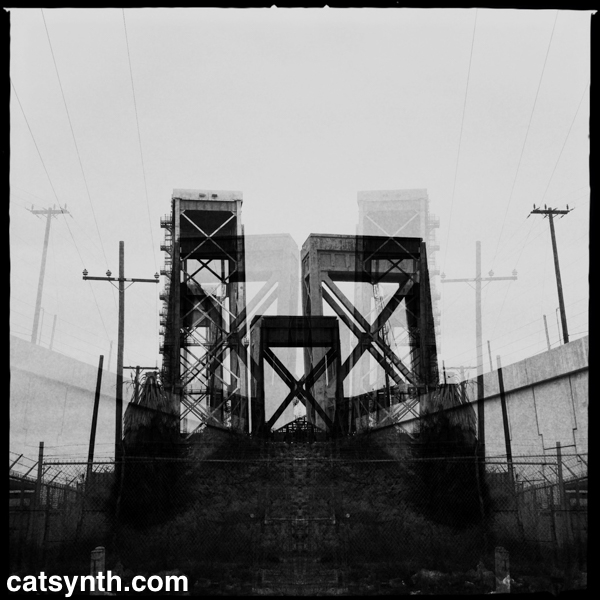
Abstract photo from Terminal Island near the Port of Long Beach, California. Taken using the iPhone Hipstamatic app.

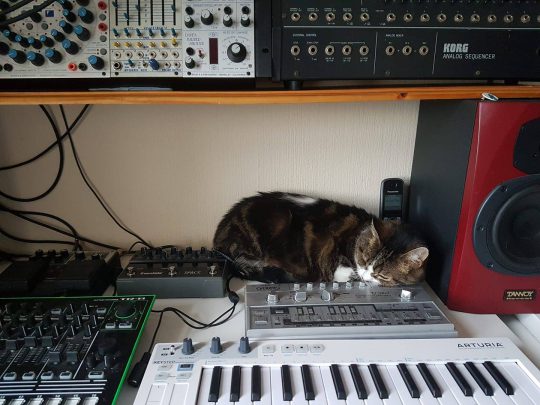
Bonnie has definitely found a nice napping spot in this studio. Submitted by David Lemur via our Facebook page.
Bonnie says: ‘More of John Cage’s 4 minutes and 33 seconds of silence please Donny’.
We see an Arturia Keystep, Roland TR-8, a TB-303 clone, a vintage Korg sequencer, and even a bit of Buchla in the upper-left corner.
One of the most talked-about releases at NAMM (at least within our circles) was the new MicroFreak from Arturia. So, of course, we at CatSynth had to check it out.
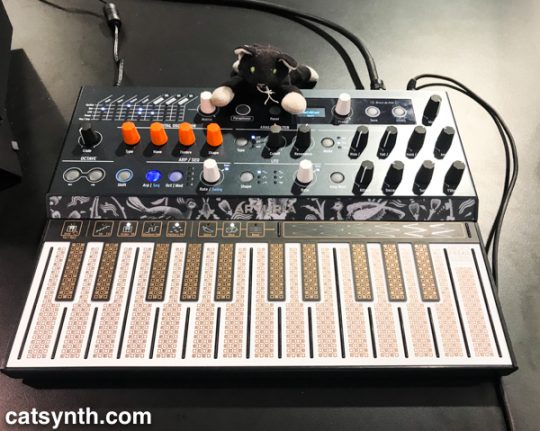
It is a unique-looking instrument. The panel is etched with a variety of iconography
Beyond its looks and keyboard, the main feature of the MicroFreak is its digital oscillator. There are several different “types” for the oscillator, including wavetable, sampling, physical modeling, virtual analog, and something called “texturizer”. Within
The digital oscillator followed in the signal chain by an analog filter, specifically an Oberheim SEM-style filter, which sounds quite good when the oscillator is set to a rich source. There also the usual array of modulators, including envelope (one-shot and cycled), LFO, and arpeggiator. The sequencer includes a bunch of compositional functions with cute names like “Spice” and “Dice” to help build and modify patterns, which then can be routed via the modulation matrix.
It is quite a powerful instrument, but attempting to play it was a bit intimidating at first. Unlike the MiniBrute (analog) or even the Sequential Prophet 12 (hybrid), the knobs weren’t quite as intuitive for someone used to a lot of subtractive or semi-modular synthesizers, especially the oscillator with its various modes and the composition functions. I suspect it was an easier first-experience for those who use beat and sample boxes like those from Elektron. Indeed, I was able to get more out of it by turning on the arpeggiator and then turning knobs. You can see a bit of my initial attempts in our recent video.
In order to really understand what this little beast has to offer, a deep dive in the studio would be required. We at CatSynth hope to be able to arrange that in the not-to-distant future, and will report back here and on CatSynth TV.

Meet Jazz the cat, who presides over a studio with Roland AIRA, Elektron, and modular synthesizers. From Border One on Instagram.
In the #studio with #jazzthecat
It’s been a little while since we last checked in with Big Merp. He had been splitting his time indoors and outdoors in the Temescal neighborhood of Oakland, but as the cold and rain started pounding the region this winter, he has gladly made the transition to being a mostly indoor cat.
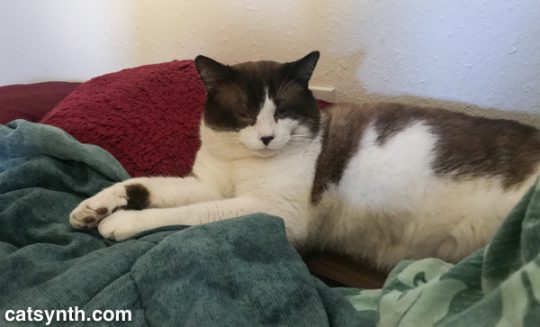
He is definitely loving the posh and comfy life in his new home.
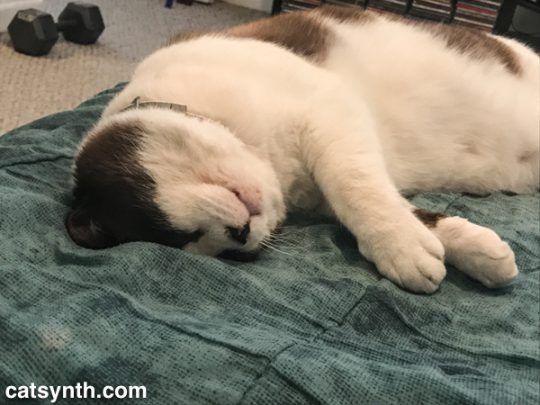
He does like to go outside now and then, to patrol the neighborhood, and to check in on his lady friend Hissy. But most of the time he is content to stay inside. Sometimes, we open the door for him to go outside, and he just stands there, thinks and goes “
Yesterday, we got him a catnip toy from our visit to Cat Town cafe and adoption center, and he has taken to it with aplomb.
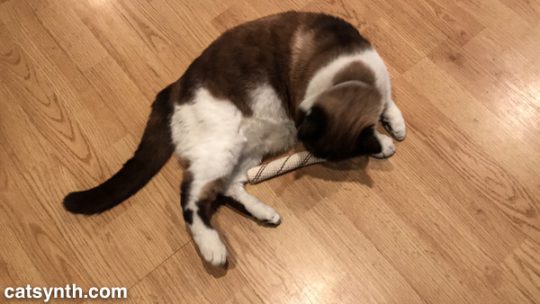
We hope you are all enjoying a happy and fulfilling Sunday, whatever you are up to.
We at CatSynth are fans of
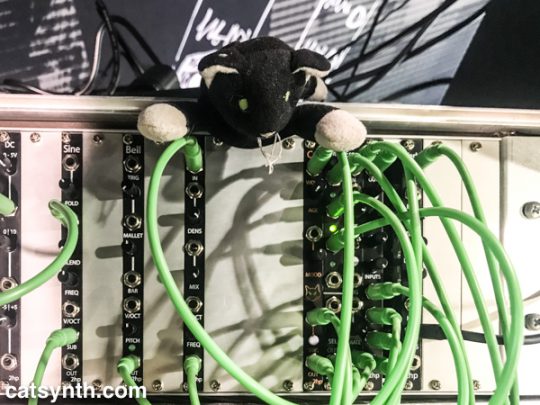
At this year’s NAMM show, the debuted four new modules covering both utilitarian and creative terrain. The one that most intrigued me was the Bell, a physical modeling voice that brings metallophone sounds. It can do vibraphone-like sounds, wine glasses, bowls, and of course, bells. With the main mallet and bar parameters (indicating that is likely based on modal synthesis), one can get a variety of combinations with CV modulation. This looks like a lot of fun – I already on the Pluck – and look forward to its release.
At the other end of the spectrum is the DC module. It offers three different DC offsets along a -5v, +5v, and 10v scale. These are useful utilities when crafting specific CV signals. I could see this pairing nicely with a Make Noise Maths for more precise control, or for tuning 1v/Oct controls.
Next up is the Sine, which is more than a simple sinewave generator. It does have a pure sine wave, but also a sub that allows blending of the fundamental, one octave below, and half an octave above. It also includes a wave folder function for rich harmonics. Essentially, this is another harmonic oscillator.
Finally, there is the Grain, a granular processor that buffers incoming signals and allows them to be output using granular synthesis. This is a bit different from a sample-based granular module like the original Nebulae from Qu-bit which works on stored samples (the v2 of the Nebulae does allow processing of live input). The buffers can then be mangled and stretched by setting the density and periodicity of grains, along with the overall pitch. The demo we saw had this hooked up to The Cat.
The result of the new modules plus the Cat and percussion made for a delightful demo as you can see and hear from our video.
For more information about these upcoming modules from 2hp, including estimated release dates, please visit http://www.twohp.com/soon/.

Meet Coco, who presides over an impressive modular-synth setup. From cary_crank via Instagram.
This is my longtime studiopartner in the background. Please give a big welcome to Coco.